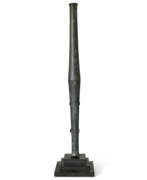Bactrian culture

Bactrian culture
Bactrian culture, flourishing in the ancient region of Bactria, is a fascinating subject, especially for collectors and experts in art and antiques. This culture, deeply rooted in the history of Central Asia, showcases a blend of artistic, agricultural, and strategic prominence.
Bactria, often referred to in ancient texts as a land of abundance and wealth, was strategically located between the Amu Darya River (ancient Oxus River) and the Hindu Kush mountains. This geographical positioning not only made it a fertile agricultural hub but also a key intersection for various cultures and civilizations. Bactrian culture is known for its significant role in the Zoroastrian faith, being one of the sixteen perfect Iranian lands created by Ahura Mazda, the supreme deity in Zoroastrianism. It served as an early center for Zoroastrianism and was the capital of the legendary Kayanian dynasty.
The region's prosperity, due in part to its immense water resources and fertile lands, made it an attractive target for conquerors. This is evidenced by the numerous times it was ruled by different kingdoms and empires. The Greek historian Strabo and the Avesta, a Zoroastrian text, both laud Bactria for its richness and beauty. Bactria was also an important center during the Greco-Bactrian Kingdom, which was established following the fall of the Achaemenid Empire and the conquests of Alexander the Great.
One of the remarkable aspects of Bactrian culture is its art, which combines Greek and local influences. This is especially evident in the archaeological finds from the region, including artifacts like bronze age goddesses, which are on display at the Ancient Orient Museum in Tokyo. These pieces showcase the blend of cultural influences that Bactria experienced over the centuries.
Furthermore, Bactria played a pivotal role in the spread of the Persian language and culture during the period of the Samanid Empire. It was during this time that New Persian emerged as an independent literary language in the region, signifying a cultural and linguistic shift.
For those interested in the rich history of Bactrian culture, especially its contributions to art and trade, museums such as the Ancient Orient Museum in Tokyo house significant artifacts from this era. These pieces not only represent the artistic heritage of Bactria but also tell the story of a region that was a melting pot of different civilizations and cultures.
To stay updated on the latest discoveries and opportunities related to Bactrian culture, particularly in the realms of art and antiques, I invite you to sign up for updates. This subscription will keep you informed about new product sales and auction events specifically related to Bactrian culture. This is an excellent opportunity for collectors and experts to deepen their understanding and appreciation of this ancient and influential culture.
| Country: | Afghanistan, Tajikistan, Uzbekistan |
|---|---|
| Start of the period: | 2500 BC |
| End of the period: | 900 BC |







